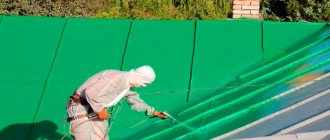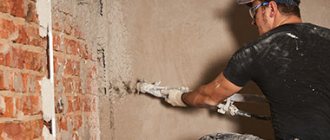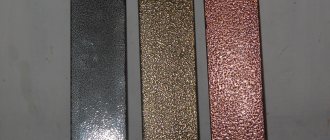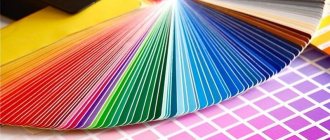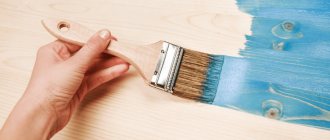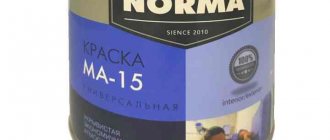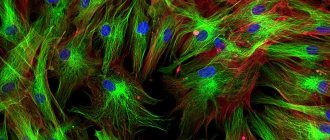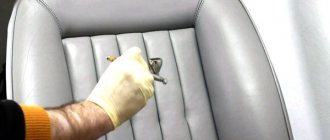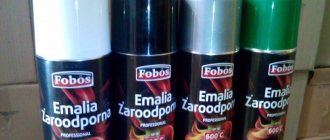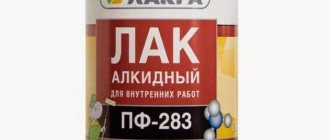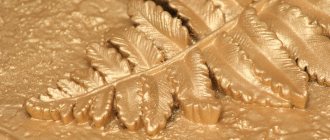Painting a product entails the question: “What product should I use?” Significant criteria are longevity and resistance to adverse conditions. Today, polymer or plastic paints (“liquid plastic”) are considered the most durable among paints and varnishes. Experts highly appreciate polymer paints for metal. Before using them, study the main characteristics of the products, their advantages, and composition. Detailed application instructions contain the procedure and nuances of painting metal products.
What it is?
Polymer paint is a mixture based on a polymer solution and dyes. Polymers form a film on the product. Hardeners and plasticizers are special additives responsible for distributing and fixing the film and its adhesion to the surface. The mixture has two consistencies - liquid or dry. Benefits of the powder:
- does not smell;
- has a wide selection of coloring agents;
- simply stored;
- easy to transport from place to place;
- economical when used correctly;
- does not emit dangerous vapors that are harmful to the environment and humans.
However, one disadvantage may outweigh all the advantages - applying the powder requires expensive equipment or a sprayer. Otherwise, the substance will be wasted and you will have to start over. Polymer products are mainly suitable for metal, in rare cases - for glass, concrete, and wood. Polymer coloring of this material is especially common today. This is explained by the fact that polymers are connected to metal by magnetic induction. Application to other materials is possible, but the product will not last long on them. Polymer finishing is used to cover water pipes, swimming pools, warehouse elements, and metal floors. Painting involves treating the surface with a powder mixture (“dry” painting). Experts believe that this method will allow the resulting film to last at least 20 years, maintaining its original properties and color.
Powder paints for metal
Types of polymer paints
Polymer compositions for painting walls can be divided into two groups - for interior and exterior use.
are widely used for facades and car bodies . They form a durable film that is resistant to abrasion and other mechanical stress, and tolerates precipitation and temperature changes well.
Acrylic paints , as well as polyester and epoxy compounds are used indoors . They tolerate oil or aggressive chemical compounds, humid air, and temperature changes well.
Liquid plastic enamel is used for finishing concrete floors and other surfaces (some options are compatible with wood and metal). It forms an even layer and tolerates negative temperatures, abrasives and mechanical damage well. It can be used to cover the floor of a house, garage or warehouse. Use paint on steel surfaces - fences, gates, pipeline elements.
Polymer paints for wood , for example, enamel based on acrylic-polyurethane dispersion, are suitable for interior and exterior work. A primer must be applied to the product before painting. Even children's toys can be treated with the composition. It is diluted with water and has a faint odor. The coating tolerates household chemicals and disinfection well.
Criterias of choice
When purchasing, you need to make sure that the composition is compatible with the desired type of base and type of work. It is also important that it can withstand the expected operating conditions.
Many formulations change characteristics after the expiration date.
The choice is influenced by the purpose of the room and its operating conditions.
For working with metal, the advantage will be anti-corrosion properties ; with wood, the presence in the product of antiseptics and additives that prevent fungal damage.
When covering walls, ceilings or other surfaces in a residential area, environmental friendliness : the composition should not emit harmful fumes into the air. It's good if it dries quickly. For facade work the mechanical strength of the coating is important, as well as the tolerance of precipitation, humid air and other climatic characteristics of the area.
The coating can be matte or glossy . In the latter case, it is easier to wash. Gloss visually enlarges the room and makes it brighter. Matte surfaces look noble, and in some cases - unusual (for example, on a car body covered with paint that imitates velvet). This texture successfully masks minor damage.
Liquid polymer paints come in one- and two-component types. In the first case, less time is spent on the coloring process (there is no need to mix components). Such products often have a more environmentally friendly composition, allowing them to be used indoors. In two-component compositions, you have to mix the paint and solvent yourself. The resulting substance must be applied to the walls soon after preparation, as it hardens quickly. This kind of work requires some skill.
Characteristics and scope
Regardless of the consistency of the mixture, it has several important parameters. Properties of polymer paint for metal:
- Adhesion to the material at the molecular level.
- Shape change when the material is damaged.
- Resistant to water, protects metal from corrosion (even boats can be painted).
- Resistance to open fire (you can paint barbecues or stove boilers), temperature changes.
- Constancy of color (it does not fade or wear off) when in contact with sunlight.
- Tolerance to chemical solvents (alkali, acids).
Pay attention to: Fire retardant paint: principle of operation and scope, types of paint for metal and wood, the best manufacturers
Polymer painting has everyday advantages: cost-effectiveness (if used correctly), a wide selection of coloring agents. There are also disadvantages: the difficulty of removing and covering it yourself. You need expensive equipment. To apply the liquid product, additional expensive equipment is not needed, but painting skills are required. The master solves the problem with experience. The paint itself is available at a good price, but the equipment requires a large investment, and without it there is no question of any profitability. A person who takes on the finishing of metal products without certain skills will waste the substance. The scope of application of the funds can be external and internal. For outdoor use (for example, for the facade of a house or furniture), polyester or polyurethane products are suitable. For internal use (mainly for household appliances) - epoxy, acrylic or polyester products in dry form. Polyesters are often used to paint car bodies. This is interesting: the choice of anti-corrosion paint.
Wide choice of colors
Video description
How to eliminate small defects on corrugated sheets with colored polymer coating, watch in this video:
The metal surface must be prepared before painting - washed with a solution with detergent to remove dirt and degrease. To improve adhesion to paint, it is recommended to phosphate galvanize - treat it with special compounds or at least acetic acid. After which the surface is washed again with water until a neutral reaction is achieved and dried.
Before painting a polymer-coated profiled sheet, areas with flaking old paint are cleaned of it using sandpaper or a sander. All the paint, if it adheres well, does not need to be removed.
The prepared surface must be clean and dry. Since such work is usually carried out outdoors, cleaning and painting are carried out by dividing the entire area into sections. Having painted one area, prepare and paint the next one so that it does not have time to become covered with dust.
When preparing the spray gun for work, first make test paints, adjusting the air supply, the direction and size of the torch, and the distance from the surface.
Surface preparation
Before painting, the metal must be prepared. To do this, follow three steps:
- Degrease the material with a solvent (for example, gasoline or acetone).
- Clean welded joints from scale and slag.
- Clean the surface from rust and other contaminants. Coat the metal with phosphates, which will increase its hardness, wear resistance under friction conditions, and protect against corrosion. If the metal has already been processed, you need to remove traces of the old coating and corrosion products.
It is recommended to ventilate the room, wear comfortable clothing, a mask and gloves to avoid contact with the dye. You need to prepare the necessary tools - roller, paint, pallet, brush. The painting area needs good lighting. Insulation from dirt will not hurt.
Cleaning welds from scale
Briefly about the main thing
Some owners of metal roofs and fences answer negatively to the question of whether it is possible to paint galvanized corrugated sheets, arguing that the paint quickly peels off, making the surface even more unsightly than before. But this can be avoided if you know how to properly prepare the surface and what paint to use. At home, it is best to use acrylic primer-enamel with anti-corrosion properties. To correct minor coating defects, it is more convenient to use aerosol paints.
Ratings 0
Painting process
The master will protect you from unsuccessful results and waste of dye. Skills and experience play a significant role here. The hired worker knows the nuances of painting metals and will avoid mistakes. The process of polymer coloring of metal includes two main stages: painting and polymerization.
Please note: Calculation of powder paint consumption for metal
Painting stage
The surface is suspended on special hooks, to which the DC circuit “Ground” is connected. The negative cable connects the terminal of the electrical element and the surface (in most cases, the body of the product being painted). The positive cable is routed to the power source. The use of wire is explained by the fact that it allows you to “reduce” the mass of the thing. In the case of large products, like a tower, there is no question of hanging. But here, too, there are recommendations: natural factors influence the coating of outdoor structures. There is no need to paint surfaces in hot sunny weather. The coating will partially peel off. Due to the “flap” effect, you will have to start work again. In this case, there will be a labor-intensive process of removing the layer. During possible dew, the adhesion between the paint and the metal will be disrupted. Only after following these procedures does polymer painting of the metal begin. Rush is unacceptable, otherwise the film will be distributed unevenly. The product must be applied in one layer at a time. There is no need to wait for the mixture to dry; you can immediately proceed to polymerization.
Metal painting
Polymerization stage
Polymerization is the progressive heating of a metal product (up to 200 degrees) for an hour in a special oven. At this stage, it is important to regulate the temperature and time depending on the surface being heated, since sintering of the coating occurs. You should pay attention to both the final temperature in the chamber and the rate of its increase. Then the paint on the metal will be successful; the substance will evenly fill its entire surface, including hard-to-reach places.
Box for polymerization
First polymerization
The first layer is called soil. The product is sent for heating as soon as it is applied. After the first polymerization, the oven itself must cool down to 100 degrees, this may take several hours. You cannot look into the chamber or try to influence the temperature inside it: the finish may crack.
Please note: Forging paint for metal
Second polymerization
The second layer is called paint. It is applied after the metal product has cooled, then the surface undergoes polymerization again. The procedure is no different from the first heating. Likewise, the product should not be tested in an oven or attempted to cool. There is also a third layer - varnish coating. It is a decorative element and is not always used, mainly for cars. When using it, it is also necessary to subject the product to the polymerization process and allow it to cool on its own.
Why is plastic coated with varnish?
The varnished composition has protective functions. As a result, it allows you to preserve the polymer base and prevent its deformation. The second point is the possibility of creating a decorative surface. A dense film with a glossy sheen is formed on the surface.
Using special solutions, you can increase the depth of the base pigment or change the color palette. In this way, it is possible to create an optical illusion on the surface that combines several tones.
Proper varnishing allows you to extend the performance of polymer parts.
- Thanks to the durable film, it is possible to prevent mechanical destruction of the plane.
- This reduces the risk of chips, scratches and cracks. However, when choosing, you must take into account the composition of the varnish.
- The fact is that not all solutions can be used for plastic elements.
For example, some types spread quickly over a plane, while others do not dry out when applied. The third type begins to stick and create streaks on the surface.

